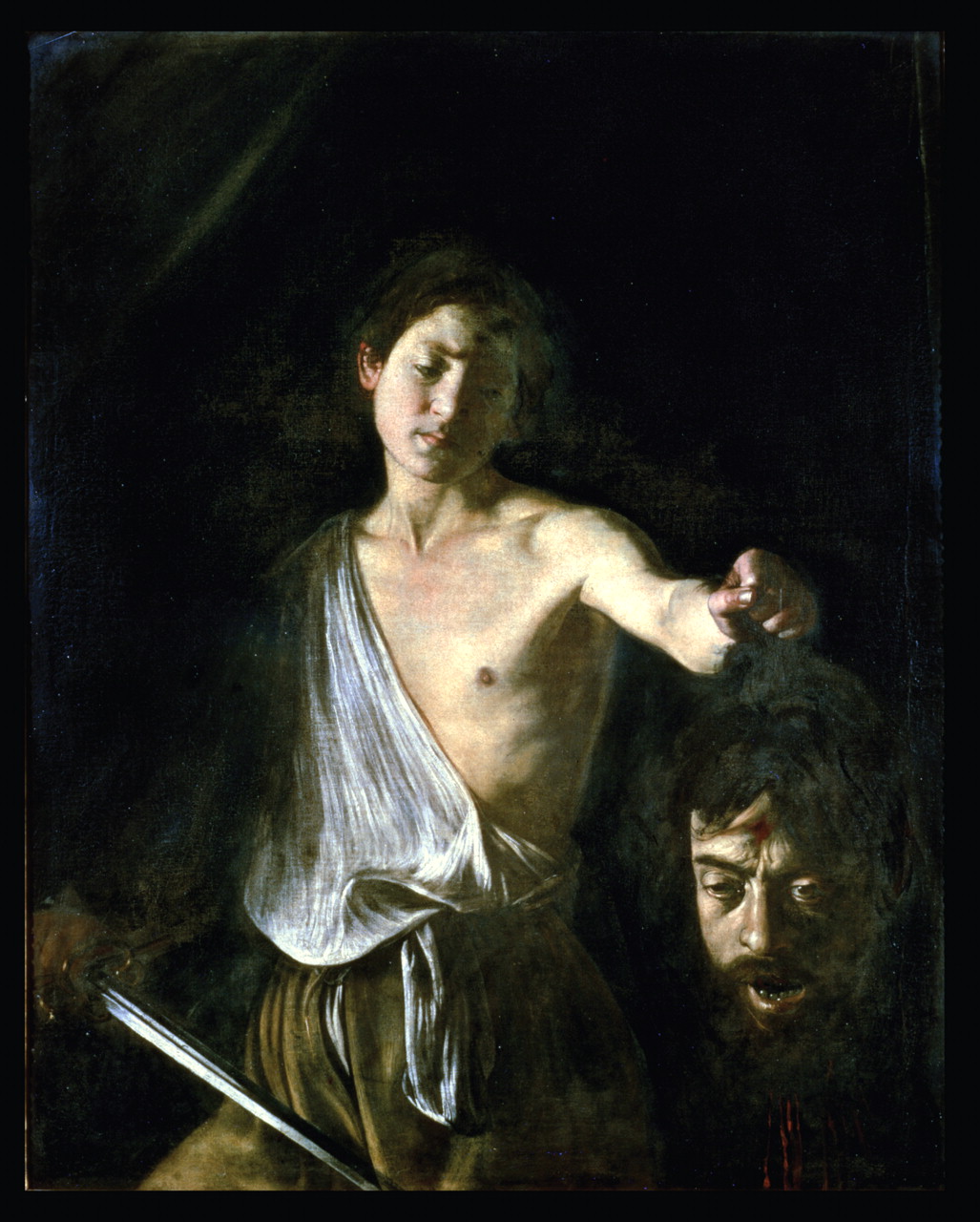Michelangelo Merisi da
Caravaggio transformed European painting. He introduced a new visual dynamism that he combined with a highly developed naturalism. Unlike most painters of his time, he used real models drawn from the streets, a practice that enhanced his naturalism. His paintings captured people in moments of intense psychological tension, and his use of raking light and deep shadow was dramatic and original. Caravaggio’s innovative paintings influenced the later work of Velazquez and Rembrandt.
Caravaggio was probably born in Milan
(1) . The Merisi family had lived for several generations in the small Lombard town of Caravaggio, hence the name he adopted. He was the oldest of four children. His father was a builder and architect who died of the plague when Caravaggio was six. He received some formal education and was apprenticed to a Milanese painter at 13. His mother died in 1590, and he took his inheritance and left for Rome. Initially he lived in bohemian circumstances, selling his paintings on the streets. His genius soon brought him to the attention of Cardinal Francesco Del Monte, a wealthy and cultivated patron of the arts. Under Del Monte’s patronage his reputation soared and he obtained major Church commissions. He never married, and his sexual orientation is unknown.
In the 16th century, Rome was violent and dangerous. Many of Caravaggio’s paintings depict violent and bloody acts. In the only painting he ever signed, The Martyrdom of Saint John, his signature is made up of the blood issuing from the mortal wound that has just been inflicted on the Baptist. Caravaggio’s personal history is redolent with episodes of violence, culminating in the murder of a local ward boss, whom he killed in a sword fight in a dispute over a tennis match. His powerful patrons had extricated him from prison after previous street brawls. On this occasion they were unable to prevent a papal death sentence but facilitated his escape from the Papal States to Spanish-ruled Naples, where he received major commissions. He then journeyed to Malta, where the Grand Master of the Knights of Saint John was eager to employ a great painter. In order to retain him, the Grand Master invested him as a knight. This required a papal dispensation since Caravaggio was a convicted murderer. It was not long before he found himself in prison, following a bloody fight in which he was identified as the ringleader. Again, with the connivance of patrons, he escaped to Sicily, where he continued to produce masterpieces. Knowing that Cardinal Scipione Borghese, the nephew of the Pope, was an admirer and collector of his work, he set out for Rome by ship in the hope of obtaining a papal pardon. He took with him recent paintings, including David With the Head of Goliath (preceding page), where the severed head of Goliath is a self-portrait. Separated from his vessel by a misidentification and brief imprisonment at a port near Rome, he impulsively set out on foot along the malarial coast, attempting to catch up with his boat and paintings. He succumbed to fever and died in a small hospital near the beach.
Early biographers of Caravaggio cite those who knew him personally as calling him “turbulent and quarrelsome,” “a madman,” and “dragged down by his own temperament.” While his volcanic rages and violent behavior are consistent with a severe personality disorder, his self-portrayal as the severed head of Goliath suggests that Caravaggio possessed some degree of insight into a central element of his psychopathology—pitilessly self-destructive and ultimately fatal masochism.


